Introduction
Has your baby ever slept with their arms up? Babies often see it. This conduct is typical but may cause worries. Newborns sleep differently to display their brain and body development.
Studies show that newborns sleep with their arms up for a good reason. Their development is natural, and knowing this helps calm new parents.
Key Takeaways
- Newborns frequently sleep with their arms up, a common behavior among infants.
- This position is linked to their natural reflexes and comfort levels.
- Understanding newborn sleep patterns can soothe parental worries.
- This arms-up stance is integral in the early brain and body development stages.
- Research into infant sleeping habits can provide insights for new parents.
The Fascinating World of Newborn Sleep Patterns
Newborns sleep a lot, between 16 and 18 hours a day. Their sleep patterns are very different from older kids and adults. They wake up briefly many times, making their sleep cycle unique.
One interesting aspect of their sleep is how quickly they enter rapid eye movement (REM) sleep, which is crucial for their brain development.
Environmental factors greatly affect newborns’ sleep. A good sleep environment is key to quality sleep. Consider room temperature, noise, and light levels. These all help create a peaceful space for your baby.
| Factor | Impact on Sleep |
|---|---|
| Room Temperature | It helps maintain comfort and reduce disturbances. |
| Noise Levels | Influences the depth of sleep; quieter environments can enhance sleep quality. |
| Light Exposure | It can affect circadian rhythms; dim lighting promotes better sleep. |
Knowing about newborn sleep patterns helps keep them healthy. A calm environment improves their sleep and supports their growth and development.
Newborn Sleep Positions
Comfortable and safe newborn sleep postures are crucial. Your infant may sleep with their arms up or extended out. This is due to instincts and security.
Newborns often have the Moro reflex, a startle reaction. When they detect abrupt movements or sounds, they fling their arms up.
Sleeping infant arm motions are typical. Seeing your infant wave their arms a lot might be unsettling. But it’s a sign of bodily awareness and progress.
Tradition and new guidance impact sleep postures throughout cultures. Some parents prefer swaddling over co-sleeping. Pediatric counseling is essential for safe and supportive newborn sleep.
Understanding infant sleep postures may calm you. You learn more about your baby’s sleep. Knowledge helps you build a comfy sleeping area for them.
Why Do Newborns Sleep With Their Arms Up?
Many parents wonder why newborns sleep with their arms up. This unique sleep posture has several underlying reasons, mainly due to infants’ natural reflexes and emotional needs. Understanding these factors can give you insight into your baby’s behavior during sleep.
The Moro Reflex: Nature’s Response
The Moro reflex—the startle reflex—explains why newborns sleep with their arms up. It happens automatically when you fall or hear a loud noise. An infant naturally expands its arms when frightened, then immediately returns them.
The reflex usually appears in the first several months and fades by six months. Because of this response, many babies sleep with their arms up because they are startled often throughout growth.
Comfort and Security in Sleep
Beyond reflexive movements, the arm-up position offers emotional comfort to newborns. Many infants find security in this posture. It resembles a protective hugging gesture.
This position can evoke feelings of warmth and stability. It mimics the comforting embrace they felt in the womb. Insights from child psychologists show that a newborn’s emotional needs are closely linked to their physical comfort.
By sleeping with their arms raised, babies may satisfy an innate desire for safety and reassurance as they drift into sleep.
The Science Behind Infant Sleeping Habits
Understanding infant sleep habits is key for parents and caregivers. Newborn sleep patterns can seem confusing because they are so unique. Learning about sleep stages and how the environment affects sleep can help improve your baby’s sleep.
Sleep Stages in Newborns
Newborns go through different sleep stages as they grow. Most of their sleep is REM (rapid eye) sleep, which is important for brain growth and memory.
The mix of deep and light sleep helps your baby grow and develop. It’s how they recharge and get stronger.
Impact of Sleep Environment
The sleep environment greatly affects your newborn’s sleep quality—things like noise, room temperature, and light matter. For example, a quiet and dark room helps your baby sleep better.
It is also important to follow safe sleep guidelines. This includes using a firm mattress and avoiding soft bedding. It makes their sleep safer and better.
| Sleep Stage | Duration | Benefits |
|---|---|---|
| REM Sleep | 50% of sleep time | Boosts brain development, enhances learning |
| Deep Sleep | 30% of sleep time | Supports physical growth, promotes restorative processes |
| Light Sleep | 20% of sleep time | Eases transitions between sleep stages, aids in settling |
Newborn Arm Reflexes and Their Significance
The arm reflexes of your infant are astonishing. Reflexes like the ATNR and palmar grasp reflex shape their motor abilities. These are essential for understanding infant development and health.
The Moro reflex is common among frightened newborns. Their arms flail and then retract. This response aids with sensory processing and helps with survival.
Asymmetrical Tonic Neck Reflex is crucial. When your infant turns their head, one arm rises, and the other falls. This reaction aids hand-eye coordination and your baby’s socialization. Understanding these reflexes helps you understand your baby’s sleep behaviors.
The palmar grip reflex is also important. Your infant will tightly clutch your finger in its palm, which indicates your baby is eager to explore. After these reflexes diminish, your baby will purposefully move its arms. Know when this occurs to assist its motor skills.
| Reflex Name | Description | Developmental Importance |
|---|---|---|
| Moro Reflex | Flailing of arms in response to sudden stimuli | Teaches sensory processing and survival |
| Asymmetrical Tonic Neck Reflex (ATNR) | The extension of the arm on the side of the head is turned | Facilitates hand-eye coordination development |
| Palmar Grasp Reflex | Grasping of objects placed in baby’s palm | Indicates readiness for exploration and interaction |
Understanding these reflexes helps you support your newborn’s growth. Watching how these movements change can give you peace of mind about your baby’s brain development. It lets you create a supportive environment for their growth.
Observing Infant Arm Movements During Sleep
Infant arm motions during sleep reveal growth. Twitching, stretching, and jerking help coordinate movement, and parents may witness their baby’s development through these activities.
Your infant may move rhythmically or randomly while sleeping. These demonstrate newborn muscular growth. Tiny muscular spasms help babies transition between sleep periods.
Many studies have examined these habits. These growth movements are natural, say experts. Knowing this might help you relax while watching your baby sleep. These motions indicate improvement, supporting your youngster.
These motions’ frequency might indicate sleep depth, which is fascinating. Your baby may move less during deep sleep. This might assist you in determining when to let them sleep without bothering them.
In conclusion, seeing your baby’s arm motions as they sleep might help you comprehend their growth. Accepting these infant behaviors fosters a nurturing environment for your kid.
Newborn Sleeping Behavior
Understanding newborn sleep is key for new parents. Newborns sleep in short bursts, day and night. Their sleep patterns change as they grow. Knowing these changes helps manage your expectations.
Shifts in Sleep Patterns as They Grow
Babies sleep irregularly in the first few months, waking often for feedings. Around 4 to 6 months, they start sleeping more soundly. Here’s how sleep patterns change as babies grow:
| Age | Typical Sleep Duration | Feeding Frequency | Common Sleep Positions |
|---|---|---|---|
| 0-3 months | 14-17 hours/day | Every 2-3 hours | On back, arms flexed |
| 4-6 months | 12-15 hours/day | 3-4 times/day | On the back side |
| 6-12 months | 12-14 hours/day | 3 times/day | On the back, occasionally on the tummy |
As your baby grows, their sleep patterns change. This affects daily routines. Knowing these changes helps you plan your day better. It makes life with your baby more manageable.
Factors Influencing Baby Sleep Posture
Several factors can affect your baby’s sleep posture, making them more comfortable and secure. Swaddling, for example, wraps your baby snugly in a soft blanket. This method makes them feel safe, just like in the womb. It’s important to learn how to swaddle safely to avoid risks.
Proper swaddling can help your baby sleep better. It might explain why newborns often sleep with their arms up. This is a natural reflex for them.
The Role of Swaddling
Swaddling is not just safe; it also helps your baby sleep better. When done right, it stops sudden movements that can wake them. Here are some tips for safe swaddling:
- Use a lightweight, breathable fabric to avoid overheating.
- Ensure your baby’s legs bend upwards and outwards for healthy hip development.
- Keep your baby’s arms snug but not overly tight, encouraging a natural sleeping position.
Parental Comfort and Peace of Mind
Your comfort can greatly affect your baby’s sleep. A calm environment helps your baby sleep better. When you’re relaxed, your baby feels it, too.
Try dimming the lights or using soft sounds to create a peaceful setting. This can help your baby sleep more comfortably. It might explain why newborns sleep with their arms up as they relax into more natural positions.
Newborn Sleep Development Over Time
The journey of newborn sleep development starts in infancy and continues into toddlerhood. As your baby grows, their sleep patterns change a lot. Newborns sleep and wake up often because they’re hungry or need comfort.
As your baby gets older, they start sleeping longer stretches. By four to six months, they might sleep for hours at a time. This is often when they hit big milestones like rolling over and crawling.
Environmental factors greatly affect newborn sleep development. Keeping a consistent sleep routine, the right room temperature, and avoiding screens greatly help. It’s key for parents to adjust their ways to meet their baby’s changing sleep needs. This makes sure your little one feels safe and cozy.
| Age Range | Typical Sleep Duration | Common Baby Sleep Patterns |
|---|---|---|
| Birth to 3 Months | 14-17 hours | Frequent naps, short sleep stretches |
| 4 to 6 Months | 12-15 hours | Longer nighttime sleep, reduced daytime naps |
| 7 to 12 Months | 12-14 hours | More established sleep schedule, one or two naps |
| 1 to 2 Years | 11-14 hours | Transitioning to fewer naps, more night sleep |
Knowing these stages helps you better understand your baby’s sleep habits. By watching for tired signs, maintaining a calm bedtime routine, and adjusting your child’s sleep space, you can help your child sleep well over time.
Conclusion
Learning why newborns sleep with their arms up helps parents understand their baby’s natural ways. It shows how their sleep patterns help with emotional and physical growth. This isn’t just cute; it signifies their need for comfort and safety.
Knowing these behaviors are normal can strengthen your bond as you care for your baby. Newborn sleep is key to their health. By following safe sleep tips, you can enjoy these early days more.
In short, knowing why newborns sleep with their arms up helps you support their growth. Cherish these moments as you start your parenting journey. You’re helping your baby grow emotionally and physically.


